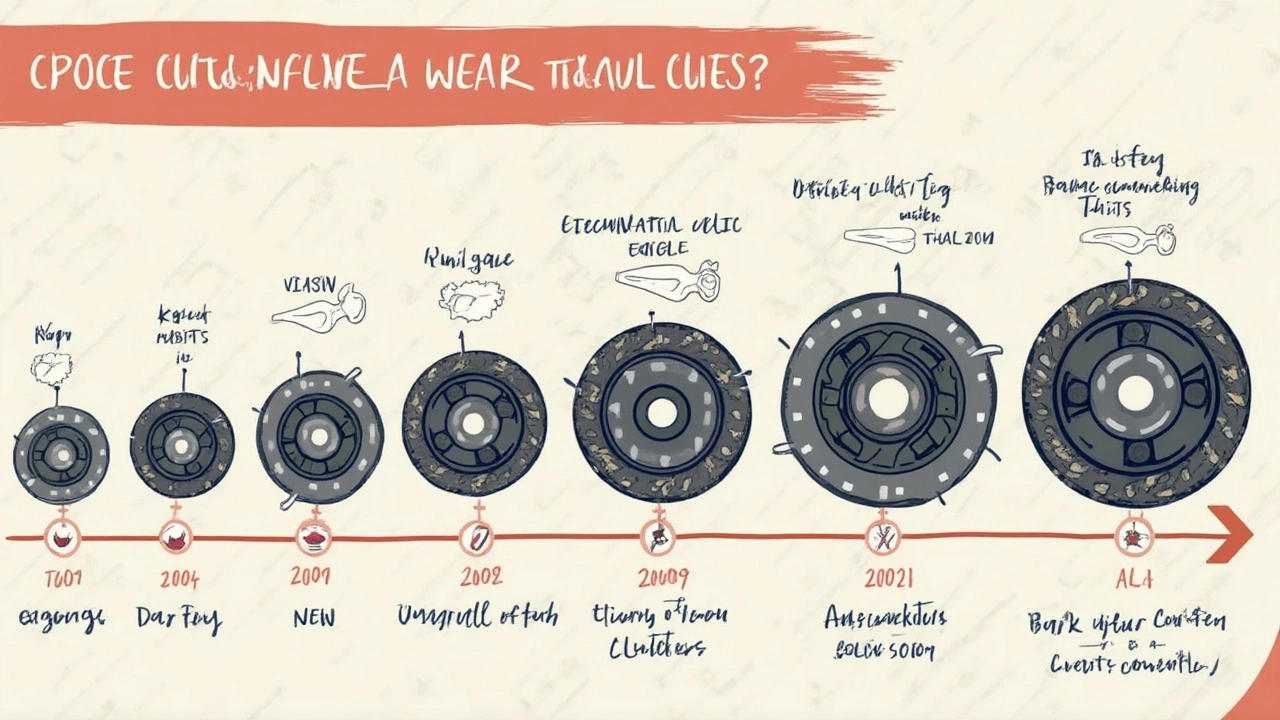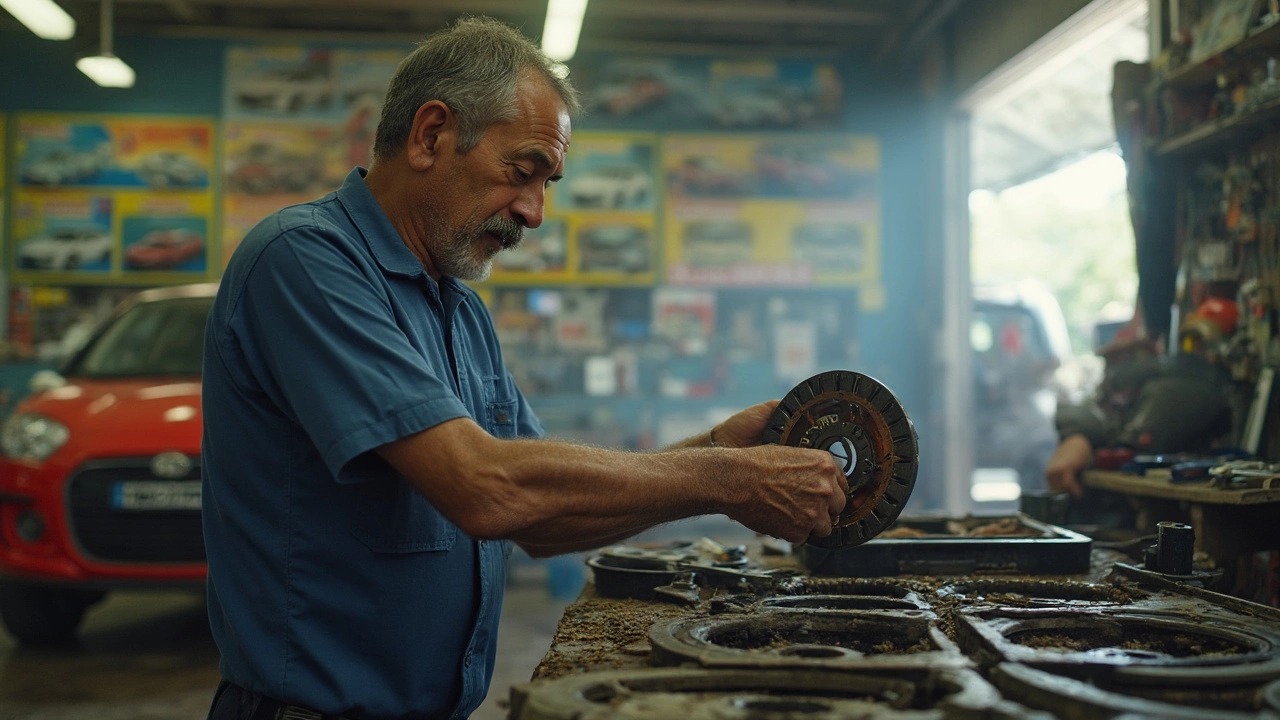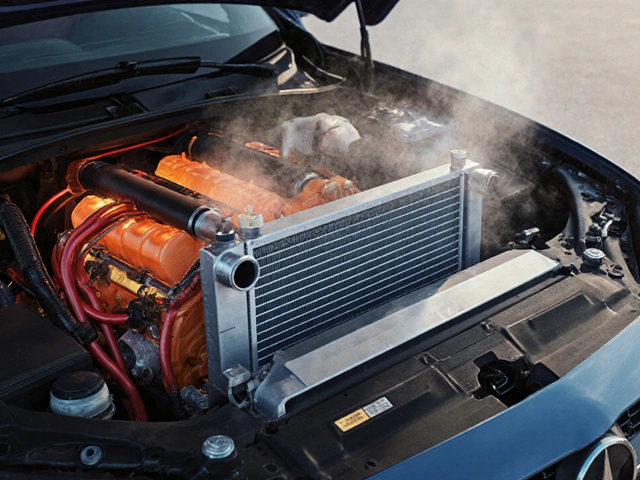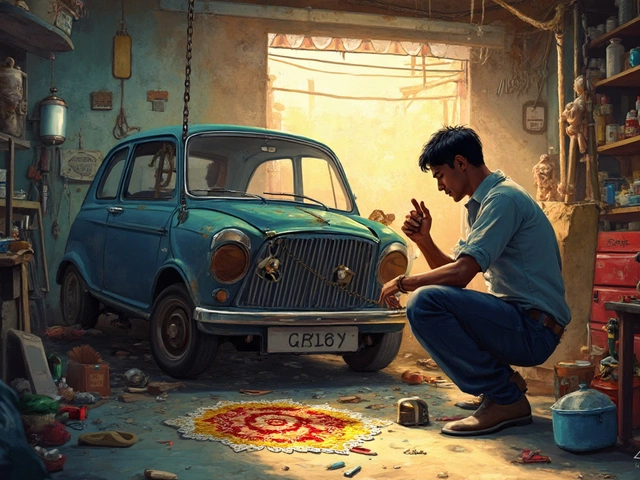Think a clutch can push 200,000 miles? Some drivers claim they've done it, but most folks are lucky to hit half that. Whether your clutch goes the distance depends on what you drive, how you drive, and what you expect out of your car.
No magic pill exists for clutch longevity—it's a mix of habits and a bit of luck. But there are proven ways to make your clutch last longer. Choosing the right clutch kit for your car isn't just about price—get the wrong one, and you'll burn through it faster, no matter how careful you are.
If you're serious about stretching your clutch's life, it pays to take a hard look at your driving habits. Ever ride the clutch at stoplights or love creeping forward in traffic using just the pedal? These little things eat through clutch material. The good news: a few small changes can add tens of thousands of miles before you need to think about repairs—or shell out cash for a new kit.
- What Affects Clutch Lifespan?
- Realistic Expectations vs. High-Mileage Stories
- Driving Habits That Destroy or Save Your Clutch
- Signs Your Clutch Is on Its Last Legs
- Getting the Most Miles from Your Clutch Kit
What Affects Clutch Lifespan?
Your clutch lifespan isn't just a roll of the dice. Several real-world things make or break how long your clutch kit will work before giving up. Paying attention to these can mean the difference between swapping clutches at 90k miles or rolling past 200k.
The biggest driver? How you use the clutch pedal. Riding the clutch, slipping it during stops, or resting your foot on the pedal even lightly while driving all chew up the clutch. On top of that, towing heavy trailers and sitting in stop-and-go traffic pile on the wear. City driving, with its constant shifting and stopping, knocks years off a clutch compared to mostly highway travel.
The car itself matters too. Small cars with modest engines tend to let a clutch kit last longer, while trucks and sports cars (especially if driven hard) burn through clutches surprisingly quick. Even a new driver learning on your car can cut the clutch’s life in half.
Let’s look at some factors side-by-side:
| Factor | Impact on Clutch Lifespan |
|---|---|
| Driving Style | Huge: Aggressive or sloppy shifting shortens it |
| Traffic Conditions | Heavy city traffic wears the clutch faster |
| Vehicle Type | Heavier or performance cars usually mean shorter clutch life |
| Quality of Parts | High quality clutch kits last much longer |
| Maintenance | Ignoring fluid leaks or worn components invites early failure |
You’d be surprised—something as small as a leaking crankshaft seal can soak the clutch in oil, killing it fast no matter how you drive. Some mechanics say they see more clutches ruined by small leaks and worn hydraulic parts than by anything else.
If you want your clutch lifespan to be closer to 200,000 miles rather than half that, you’ve got to keep your driving habits tight, choose the right clutch kit, and keep an eye out for leaks or odd noises. Paying attention now pays off later—and keeps your wallet happier too.
Realistic Expectations vs. High-Mileage Stories
Let’s get one thing straight: most manufacturers don’t promise a clutch kit will last anywhere close to 200,000 miles. For most cars nowadays, the average clutch lifespan falls in the 60,000 to 100,000 mile range—assuming normal daily driving and regular maintenance. Push your car hard, ride the clutch, or tow heavy loads? Expect way less.
But you’ve probably heard that one neighbor swear their clutch hit 250,000 miles with no issues. Are they lucky, telling tall tales, or just super gentle drivers? Truth is, long clutch life can happen, but it’s the exception, not the rule. High-mileage stories usually come from folks with highway-heavy commutes, gentle shifting skills, and regular checks on their clutch’s health. City driving, stop-and-go traffic, or hauling stuff all the time? That’s clutch wear in fast-forward.
To make it clear, check out this quick table showing typical clutch lifespans based on car use:
| Driving Style | Typical Clutch Lifespan |
|---|---|
| Mostly Highway | 80,000 - 150,000 miles |
| Mixed Driving | 60,000 - 100,000 miles |
| Mostly City (Stop-and-Go) | 30,000 - 70,000 miles |
| Heavy Towing/Performance | 20,000 - 50,000 miles |
If you’re shooting for a clutch lifespan above 100,000 miles, you need ideal conditions and, honestly, a bit of luck. Factory clutches in certain Hondas, Toyotas, and old Volkswagens sometimes broke the 200,000 mile mark, but it wasn’t the norm. It’s possible, but you have to baby that clutch and treat every shift like it’s gold.
Bottom line? Stories of super-long clutch life make great shop talk, but don’t bank on your own clutch kit lasting that long unless you know exactly how to treat and maintain it—and can guarantee your driving matches those rare high-mileage cases. It’s not impossible, but it’s a high bar.

Driving Habits That Destroy or Save Your Clutch
Your clutch lifespan can swing wildly based on how you drive, not just what you drive. Small daily habits make or break how long that clutch kit survives, whether you're aiming for 100k or chasing that wild 200k miles goal.
Here are driving moves that kill a clutch fast:
- Riding the clutch pedal: Keeping the pedal halfway down while waiting at lights or creeping in traffic burns out the clutch faster than you think. The friction never fully stops—great for premature wear.
- Holding the car on a hill using the clutch: Letting your clutch hold you instead of the brake when stopped on a slope cranks up the heat and waste inside the system. Always use the brake instead.
- Shifting without fully pressing the pedal: Cutting corners by not pushing the pedal all the way in grinds the gears and makes the clutch surface wear out quicker.
- Racing starts and hard launches: Flooring it from every red light or peel-outs at a stop hammer your clutch. The increased force and heat cook the plate in no time.
Now, here’s what actually helps your clutch kit live longer:
- Fully disengage the clutch when shifting: Every time. This clean movement saves unnecessary wear on the friction disc and pressure plates.
- Don’t use the clutch to hold your position: Use your brakes and neutral at lights or long stops. Let your left foot rest—your clutch will thank you.
- Shift gently, not aggressively: Calm, smooth gear shifts are way easier on all the mechanics involved.
- Learn to match your revs: When downshifting, a little engine rev to match road speed helps prevent shock and clutch slip.
Car repair shops say they see clutches toast as early as 30,000 miles if drivers ignore these tips. But stick to the good habits and it’s not rare for clutches to last well past 120,000 miles, and in a few documented cases, actually hit or exceed 200k (though that’s still pretty uncommon).
| Bad Habit | Effect on Clutch |
|---|---|
| Riding the Clutch | Accelerates wear, shortens lifespan |
| Hill Holding | Excess heat, premature failure |
| Hard Launches | Rapid material loss |
| Partial Pedal Presses | Slip and uneven wear |
Most cars die from the driver's left foot, not a faulty part. Commit to these small daily tweaks and you give your clutch lifespan the best shot at legendary mileage.
Signs Your Clutch Is on Its Last Legs
We all hope our clutch will keep kicking for ages, but once it starts going bad, the signs aren't hard to spot—if you know what to look for. If any of these symptoms show up, don’t ignore them. A worn clutch only gets worse.
- Slipping Gears: If you hit the gas and your engine revs up but your car barely moves faster, your clutch could be slipping. It feels like the car isn’t fully grabbing the gear anymore, especially in higher gears or under heavy acceleration.
- Hard or Sticky Pedal: A clutch pedal that’s hard to push or slow to rebound is a big red flag. Sometimes it feels spongy or makes weird noises when pressed.
- Grinding or Unusual Noises: Squeaks and grinding when you press the pedal or change gears usually mean trouble inside the clutch kit—often worn components like the pressure plate or release bearing.
- Burnt Smell: A burnt toast smell after heavy traffic or a steep hill? That’s the friction material wearing out. If it’s constant, the clutch is probably cooked.
- Creeping or Jerky Movement: The car might shudder, jerk, or creep forward even with the clutch fully pressed. That’s a sign things are way past healthy.
If you're not sure what you're feeling or hearing, there's a simple way to test your clutch at home. With the engine running, put the car in third gear and slowly let out the clutch pedal. If the car doesn’t stall almost right away, odds are the clutch isn’t gripping like it should.
For extra peace of mind, here’s a quick look at how often these problems show up as clutches age:
| Mileage (miles) | Common Signs Appearing (%) |
|---|---|
| 50,000 | 10% |
| 100,000 | 60% |
| 150,000 | 85% |
| 200,000 | 98% |
Not every clutch will show all these signs, and sometimes issues can point to a bigger transmission problem. Spot the symptoms early and you’ll save yourself a pile of headache—and cash—down the line.

Getting the Most Miles from Your Clutch Kit
If you want real value out of your clutch kit, the way you drive and care for your car means everything. Lots of clutches bite the dust way before their time, not because they’re weak, but because of driver habits and skipped maintenance. So, what actually works for squeezing out every mile?
- Don’t ride the clutch pedal. Keep your left foot off the pedal unless you’re shifting. Resting your foot—even a little—keeps the clutch partially engaged and wears it down, fast.
- Skip the aggressive launches. Stomping on the gas at every green light might feel great, but it’s brutal for your clutch lifespan. Quick launches create heat and friction the clutch just can’t handle in the long run.
- Use the right gear for the job. Driving in too high or too low a gear puts stress on your clutch kit. Shift at the right RPMs for your car, and don’t let it struggle.
- Don’t hold the car on hills with the clutch. Use the brake or the handbrake when you’re stopped on a slope. Holding the car with the clutch partially engaged is a guaranteed way to burn it out.
- Get regular checks. Most people ignore the clutch until it slips, smells, or squeaks. But if your mechanic’s under the hood for an oil change, ask for a quick clutch check. They might spot early signs of trouble you can fix before things get expensive.
Decent clutch kits today last anywhere from 60,000 up to 100,000 miles—and yes, there are outliers who push past 150,000. Hitting 200k miles isn’t totally impossible, but it takes not just careful driving, but also picking a clutch that matches your car’s power and weight. Slapping in a super-basic kit in a heavy-duty pickup? Forget it, you won’t get far.
| Driving Habit | Estimated Clutch Lifespan |
|---|---|
| Gentle shifting, low-traffic driving | 120,000–200,000 miles |
| Mixed routine, occasional city traffic | 80,000–120,000 miles |
| Heavy city driving, frequent stop-and-go | 40,000–80,000 miles |
One tip a lot of drivers miss: keep an eye (and ear) out for new noises or changes in pedal feel. A sticky or spongy clutch pedal or a faint burning smell signals trouble. Deal with it early, and you could dodge big repair bills and hold onto those miles.




